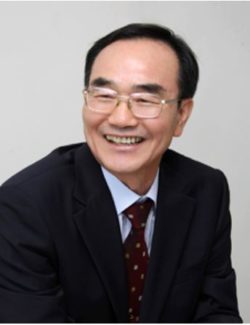
Hak-Gyoon Kim
Education
Hak-Gyoon was born in Kwangju, Republic of Korea on 8 September 1949. He began his studies in marine biology and aquaculture at Pukyong National University in 1968, and received a position as marine plankton researcher at the National Institute of Fisheries Science (NIFS, formerly NFRDI) in 1974. He traveled abroad to ISTPM (currently IFREMER) in Nantes, France, to study marine biology and water pollution with Patrick Lassus in 1979, and received a Diplome d’Etudes Approfondies d’Ecologie at the University of Rennes in 1983 under the supervision of Professors Paul Trehen and J.C Amiard. After returning to Korea, he worked on marine phytoplankton and red tides, especially to clarify the mechanisms of red tide outbreaks and their effects on cultured marine animals. He joined national HAB monitoring and prediction programs that included environmental monitoring, through which he made decadal observations on the seasonal abundances and succession of phytoplankton species in Masan Bay until 1988. He was awarded with the degree of Doctor of Science from Pukyong National University with his thesis titled, “Characteristics of Flagellate Red Tide and Environmental Conditions in Masan Bay, Korea” in 1989.
Honors
He was awarded the Order of Red Stripes from the Korean Government in 2005 for 33 years of excellent research performance in marine science, specifically for HAB research and monitoring. He received prizes from the Minister of Agriculture and Fisheries for his excellent performance in fisheries research activities. The Presidential Award was given to him in 1995 for successful achievements in mitigating the impacts of HABs on aquaculture. He was the delegated Head of Representatives for The Republic of Korea at the Twenty-first Session of the Assembly, Intergovernmental Oceanographic Commission (IOC of UNESCO) in 2001. He was appointed as Vice-Chair for the Marine Environmental Quality Committee of North Pacific Marine Science Organization (MEQ PICES) from Oct. 2006 - Oct. 2009.
Professional Career
For more than 30 years (1974-2005), Professor Kim conducted research on coastal pollution at NIFS with a focus on HABs. As Director of the Division of Marine Environment, he constructed a nationwide HAB monitoring network and was the first scientist to initiate the mitigation of HABs using clay, especially to eliminate the effects of the fish-killing dinoflagellate Cochlodinim polykrikoides (currently Maragalefidium polykrikoies) blooms. He was in charge of the Korean HAB monitoring and mitigation program at NIFS from 1997 to 2004. His final official appointment was as the Director of South Sea Fisheries Research Institute in 2005. As the Korean representative, he joined the IOC of UNESCO (1999-2001), Asia Pacific Economic Cooperation (APEC-MRC; 1993-2001), PICES (2003-2010), the Northwest Pacific Action Plan United Nations Environment Program (NOWPAP/UNEP), Global Ecology and Oceanography of Harmful Algal Blooms (GEOHAB), and ISSHA for global collaboration and partnership in HAB monitoring and mitigation.
He worked at the faculty of Earth Science of Pusan National University (PNU) from 1997-2001, and at the faculty of environment and oceanography in Pukyong National University (PKNU) from 2000-2004 as Professor for the capacity building to enhance HAB monitoring and mitigation. After retirement, he has worked as an as Emeritus Professor at the Pukyong National University 2005-2008, and as Visiting Professor at the Kyoto University from September 2008 to March 2009.
Key HAB contributions
Most of his scientific research has been focused on building and operating national programs on monitoring, prediction, and mitigation of HABs to sustain stable aquaculture industries. He introduced clay dispersal to reduce the impacts of C. polykrikoides blooms to fish farms. He managed many international activities on HABs to improve the region’s ability to protect human health, support the aquaculture industry, and enhance trade through improved and standardized assurance of seafood product quality. He contributed to the APEC Red Tide/Toxic Algae Project on the Working Group on APEC MRC during 1993-1995. The output was “Red Tides and Harmful Algal Blooms in the Asia Pacific Region, 1995.” He contributed to the joint GEOHAB SCOR-IOC workshop in 1998. He initiated the Korea HABs (KORHAB) that organized the XV International Conference on Harmful Algae (ICHA2012) in Korea in 2012. In 2004, together with Professor Yasuwo Fukuyo and Dr. Zhou Mingjiang, he initiated the East Asia HAB (EASTHAB) Program, a meeting which continues to be held biennially. He also contributed to NOWPAP, one of Regional Seas Programs of UNEP, for Harmful Algal Blooms in the Northwest Pacific with China, Japan, Korea and Russia in the period 2003-2008. He and Dr. Vera Trainer co-chaired the PICES Section on HABs from 2003-2010, and helped establish a joint ICES-PICES harmful algal event meta-database (HAE-DAT) with the goal of building a common data resource worldwide, to allow inter-comparison of HAB species and the magnitude of their environmental and economic impacts.
Mentored
He served concurrently as a Professor at both at PKNU and PNU (1997~2004), and as an invited professor (2005~2008) at PKNU. He has mentored several M.S. and Ph.D. students, especially on phytoplankton ecology and HABs. Among others, he has mentored Wol Ae LIM, Chank Kyu Lee, and Sam Geun Lee.
10 Key HAB publications
H.G. Kim, K. Matsuoka, S.G. Lee, K.H. An. 1996. The occurrence of a dinoflagellate Gymnodinium catenatum from Chinhae Bay, Korea. J. Korean Fish. Soc. 29(6), 837-842.
H.G. Kim, S.G. Lee, K.H. An. 1996. Inter-annual changes in Heterosigma akashiwo blooms in Korean coastal waters. Bull. Nat. Fish. Res. Dev. Agency, 52, 1-14.
H.G. Kim. 1998. Cochlodinium polykrikoides blooms in Korean coastal waters and their mitigation. Reguera, B., Blance, J., Fernández, M.L. and Wyatt, T. Xunta de Galicia and IOC of UNESCO.
H.G. Kim, W.J. Choi, Y.G. Jung et al. 1999. Initiation of Cochlodinium polykrikoides blooms and its environmental characteristics around the Narodo Island in the western part of South Sea of Korea. Bull. Nat. Fish. Res. Dev. Inst. Korea 57, 119-129.
C.S. Kim, S.G. Lee, C.K. Lee, H.G. Kim, J. Jung, 1999. Reactive oxygen species as a causative agents in the ichthyotoxicity of the red tide dinoflage llate Cochlodinium polykrikoides , J. Plankton Res. 21(11), 2105-2115.
C.S. Kim, S.G. Lee, H.G. Kim. 2000. Biochemical responses of fish exposed to a harmful dinoflagellate Cochlodinium polykrikoides. Journal of Experimental Marine Biology and Ecology 254, 131-141.
S.J. Lee, Y. Kim, H.G. Kim, G.M. Seo, J.H. Jeong and Y.K. Hong. 2000. Algalytic activity of α-mannosidase on harmful marine microalgae, Journal of Applied Phycology, 12, 191-193.
G.H. Park, K.T. Lee, H.G. Kim et al., 2005. A sulfur hexafluoride-based Lagrangian study on initiation and accumulation of the red tide Cochlodinium polykrikoides in southern coastal waters of Korea, Limnol. Oceanogr., 50(2), 578-586.
H.G. Kim. 2006. Mitigation and Controls of HABs. Ecological Studies, Vol. 189. Edna Granéli and Jefferson T. Turner (Eds.) Ecology of Harmful Algae, pp.327-338. Springer, Berlin.
C.J. Kim, H.G. Kim, C.H. Kim, H.M. Oh. 2007. Life cycle of the ichthyotoxic dinoflagellate Cochlodinium polykrikoides in Korean coastal waters. Harmful Algae 6, 104-111.
---
Compiled by Ichiro Imai (Hokkaido University) and Wol Ae Lim (NIFS, Korea). partially based on Hak Gyoon’s CV submitted to Kyoto University for his Guest Professorship in 2008.

